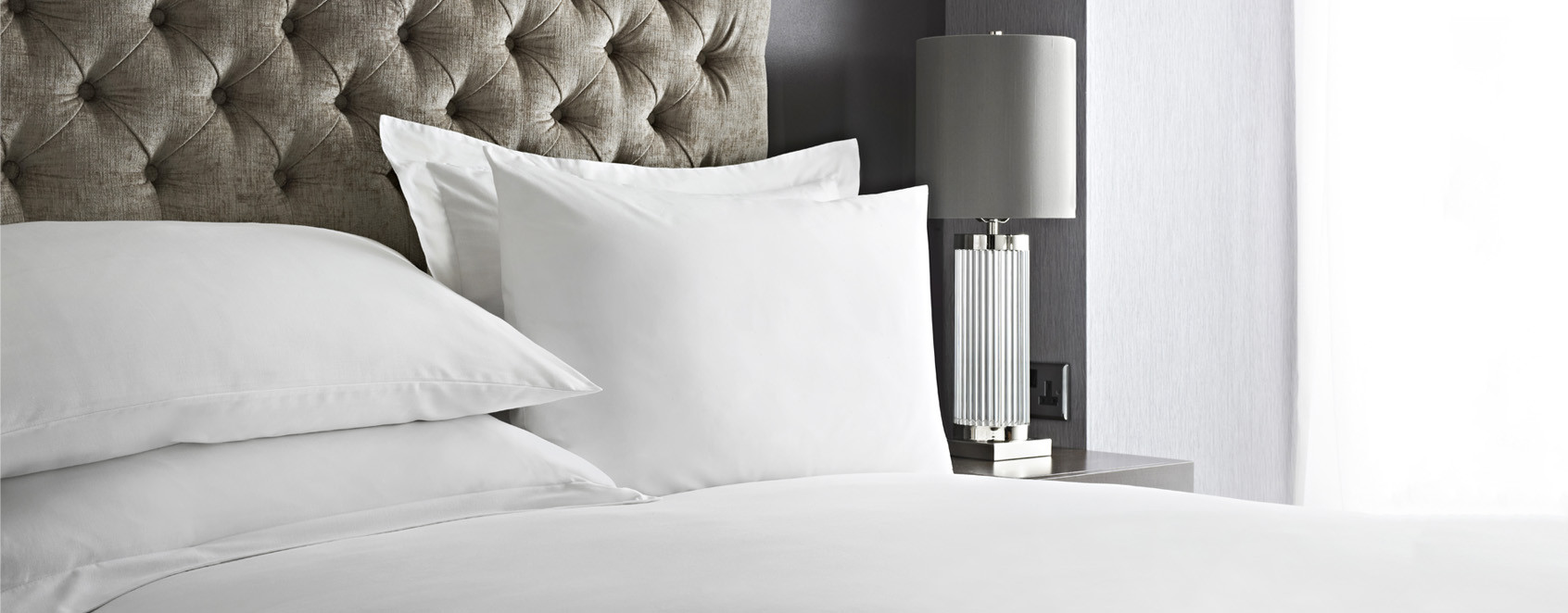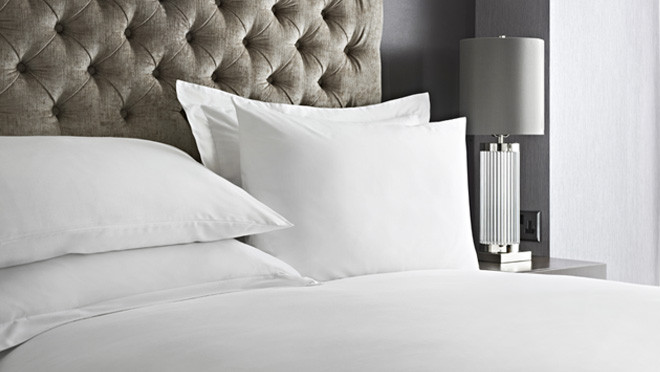We use cookies to make your experience better. To comply with the new e-Privacy directive, we need to ask for your consent to set the cookies. Learn more.
Bath Linen Guide
Topics


1. How to Pick the Perfect Towel......GSM Explained
Bath towels are typically the hardest working members of your hotel or household. As well as keeping us dry and clean, towels add to the look and feel of a bathroom and can even be expected to wipe up muddy floors or dry your pet after its weekly wash. When shopping for towels it is important to avoid choosing a towel from touch alone. Here are tips for finding high-quality towels and knowing how the GSM of a towel can play a vital part in the selection process.
To ensure the towel feels cozy and luxurious, check the care label and ensure it states the towel is 100% cotton. Cotton fibers naturally attract water and can hold almost 25 times its weight in liquid. For extra comfort, 100% combed cotton ensures that the shorter threads have been removed, keeping the towel strong and prevent pilling. However, most towels are made of cotton, but the look and feel of towels largely depends on the type of cotton used. Towels designed and priced for everyday use are typically made of standard cotton, while the more expensive Egyptian cotton towels have a much longer threads, allowing each towel to have more moisture absorbing loops per inch.
The number and the length of loops is also an important factor in choosing the right towel. The denser the loops, the more absorbent the towel will be so check the stitch for thick, tightly packed loops. If however you can see the base of the towel, then this is an indicator of a poor quality towel. The key to the longevity of a towel is for the hems to be double stitched all the way around the edges of the towel. This extra reinforcement reduces fraying and will give your bath towels a longer life.
The best way to judge the quality of a towel is to hold it. A high quality towel feels much heavier than it looks and in turn will be much more absorbent. The weight of a towel is measured by the GSM (Grams per Square Metre). Low GSM (300-400) towels are light and thin whilst high GSM (450-600) towels are thicker and heavier. A towel that weighs less than 400 GSM is likely to be thin and typically suitable for a gym bag or trips to the beach. If you are purchasing a hand towel or guest towel then it is advisable for the GSM to be at least 400. For Bath Towels, a higher GSM of 500 will provide a soft and absorbent towel. Typically, the higher the GSM, the better performance you will have from the towel.
2. Should you wash towels before using?
We would certainly recommend washing a new towel before using. Firstly for hygiene purposes and also a towel becomes much more absorbent after the first wash.
3. How to care for your towels
Always follow the washing instructions placed on the label of the towel.
- If there is a stray pulled loop on the towel, cut off with a pair of scissors. This will not cause any damage to the towel.
- Richard Haworth suggest using detergent specifically for coloured towels and to avoid brightening detergents as this will affect the towel colour.
- Richard Haworth Towels can be washed at 60ºC.
- A harsh texture to towels and bathrobes and an off-white colour are signs of bleach damage. It is best to avoid bleaching agents when washing towels.
- Bathroom detergents and some beauty products such as cleansers contain bleaching agents and may cause permanent discolouration to your towel.
- Washing too hot can cause the bars on the towels to shrink.
- Fabric conditioner will reduce the absorbency of the towel, as it coats the yarn of the towel making it less efficient.
- Do not dry clean towels.
4. What is Terry?
Terry is a cloth with either loops all over on both sides of the fabric or patterned loops on both sides. It is formed through a weaving process with an extra warp yarn to make the loops. Characteristics of terry cloth are as follows; long wearing, easy to launder with little or no ironing required. Terry can be bleached, dyed, or printed (similar to screen printing). Better quality terry has a close, firm underweave, with very close loops (the general rule of thumb is the closer the loops, the better the quality of terry). Terry is very absorbent, and the longer the loop, the greater the absorbency. When the pile is only on one side, it is called "Turkish toweling".
5. What makes terry cloth towels so absorbent?
Most terry cloth is made with cotton because the absorbent fibre gets stronger when wet and it can be washed in very hot water using strong bleach and detergent without harm. Terry cloth is usually made with looped pile because the loops act like very small sponges. Looped pile is also better able to withstand the strain of rubbing, pulling twisting and tugging by the user. Loosely twisted loops are softer and more absorbent than tightly twisted loops, which produce a rougher fabric. Long pile is more absorbent than short pile. Terry cloth is most absorbent when it has loops on both sides. Cotton can absorb up to 27 times its own weight in water.
Here at Richard Haworth we have a number of terry products within our range including plain terry facecloths, terry guest towels, open toe terry slippers and Malibu bathrobes with an absorbent terry inner.
6. What is Velour?
Velour towels are terry towels where the loops have been cropped to give a smoother texture and to make the design clearer.
8. Glossary of Textile Terms
Click here for our helpful glossary of textile industry terms.
9. How to care for your bathrobes
Washing
- Wash the robe, depending on the amount of soiling, between 40°C and 60°C using a standard detergent.
- Do not use any bleach products in the washing cycle.
- Never wash robes with any other type of product to avoid pilling and linting.
- After washing use a high spin cycle to remove as much excess water as possible. This will help to reduce drying time.
Drying
- The manufacturer`s care label states to tumble dry using a low heat.
- However a medium heat works very well. The heat ensures the robes dry quickly and also aids in allowing the fabric to fluff back up and retain its original softness.
- It is very important not to overload the dryer so that the robes have enough space to tumble properly. If the dryer is overloaded then the fabric can become harsh to the touch due to the constant abrasive action and the fluffy appearance will be lost.
- Never tumble dry these robes with any other product to avoid pilling and linting.
General Tips
✓ Always launder robes before use.
✓ Always keep robes away from fire.
x Do not Iron. This will affect the pile and can scorch / discolour.
x Do not Dry Clean.


